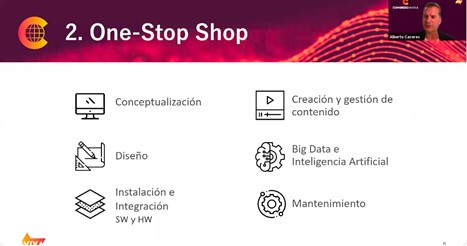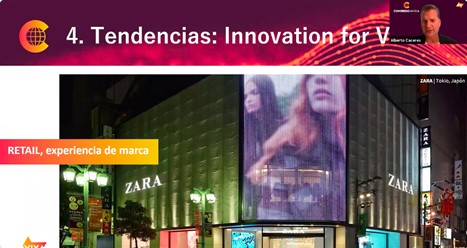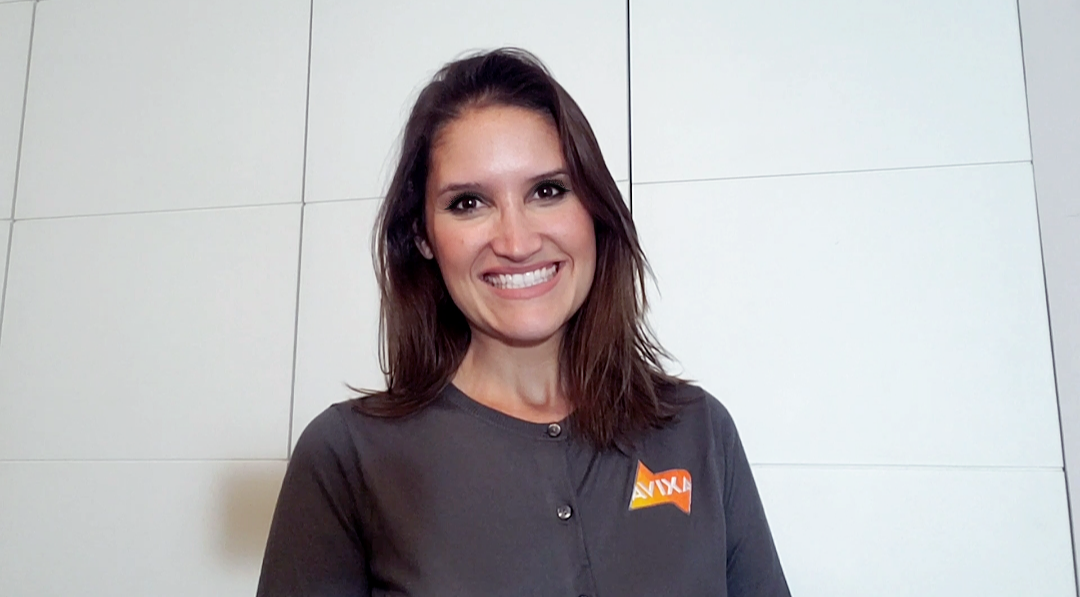Embracing the Digitization of Physical Spaces
When Alberto Cáceres, CEO of TRISON, a leading company in the digitization of physical spaces and audiovisual experiences development for global companies in the retail sector, mentions that "the digital signage market has infinite potential," he says so convinced of it. This Spanish authority has the necessary experience and arguments to envision a promising future for digital signage. Without a doubt, his presentation during the recent Congreso AVIXA, available on-demand at this link, was a great lesson for those who look to grow in said market.
One of the fields in which these global companies put the greatest interest is the digitization of physical spaces. It is part of their business strategies and demand solutions that go beyond conventional digital signage. This is very clear in retail, hospitality, or banking sectors, so they look for suppliers that help them generate a brand experience to attract, interact, surprise, inform, and connect with their consumers.
Trending: Innovation for Value
Cáceres shared data from the Innovation for Value study (Spain, 2019), carried out by TRISON and Intel on the future of digitization in general and the digitization of physical spaces. For example, the study reveals that 46% of Spanish directors say that innovation is essential for a company's development. Also, they are clear that digitization projects are very complex, so they are willing to work with technology integrators capable of designing and executing strategic solutions in a package that includes all services.
The study also highlights the trends that are already seen in the retail world, where it is necessary to offer a brand experience, from the moment of attracting the patron and accompanying him throughout the customer journey. The product becomes an experience in which interactivity is expected, an integrated purchase process in which hardware and software coexist, understanding that online and offline are part of the same channel.
In the automotive industry, luxury vehicle dealers will need to create brand experiences that differentiate their products from everyday vehicles. On the other hand, the growth of Mobility as a Service (MaaS) concept will require digitization solutions in physical spaces that quickly and efficiently communicate how their services work.
This is also apparent in retail banking, where banks are transforming their branches to become open spaces where the client receives advice and has access to information and services in a comfortable and secure environment.
It is also impacting corporate buildings which must now provide an attractive environment that awakens creativity, boosts productivity, and motivates people to come into the workspace. A smooth-running conference room is not enough; companies will have to offer a space that justifies the time and cost of a one-and-a-half-hour commute from home to the corporate building.
How integrators can go beyond digital signage
Against this background, technology integrators who want to participate in this market must conceptualize, design, and implement strategic solutions that meet customer needs.
To develop a strategy for the digitization of physical spaces, Cáceres suggests that the technology integrator become a one-stop-shop provider that is involved from the beginning of the project to work on the concept, design, engineering, installation and integration of hardware and software, content creation, content management, use of Artificial Intelligence, Big Data, up to maintenance.
How can we create a bond with a person from the first time he steps into a store until he leaves it? How to make her obtain information, discover, or be surprised? How to create an atmosphere that leaves a memory in him? To solve these challenges, technology offers us a wide variety of tools to develop 360-degree projects that are focused beyond the customer’s sight to stimulate their other senses.

Cáceres divides the technological tools to "go beyond digital signage" into six kinds of solutions:
- Visual solutions: The wide variety of technologies available, from LED screens, projectors, video walls, touch screens, magic mirrors to holograms, virtual reality, or augmented reality, facilitate the development of visual solutions. "It is important to know and use them, to cover the entire spectrum to not stay with basic technologies. Furthermore, mastering these resources will be a great example of our work that will benefit the entire sector", points out Cáceres.
- Content: Environmental or thematic content that go beyond advertising, have the power to turn a good project into a magical project. For this reason, Cáceres believes that content creation makes a big difference in this field. Of course, there are tools for content management and content integration, both provided by the client (messages, advertising) and external ones (weather, the stock market, or traffic information).
- Acoustic solutions: "There are still many companies that only focus on visual resources when sound is essential to create and modify the environment in favor of a more satisfying customer experience," explains Cáceres. "It is necessary to see the audiovisual as a unity, to include content, sound systems, and acoustic insulation to control the quality of the solution we offer."
- Scent marketing: Scent adds a third sense to a digitization solution for physical spaces, thereby giving it a holistic nature. Scents are a much more universal source of stimulation than audiovisual; the smell is processed by the olfactory bulb, one of the limbic system structures and a very ancient part of the brain, which is why scents have great power to communicate, inspire, or create identity.
- IoT, analytics, and other solutions: Consumers are used to accessing services through the Internet, buying online, booking a table in a restaurant from our mobile phone. "It seems to me that it is possible to integrate the components of the online experience into physical spaces to provide the best of both worlds," adds the TRISON executive. In this area, there are many technologies available that will help us to know what happens in spaces. Analytics software, sensors, e-beacons, digital welcome totems, RFID, and many others are useful technologies to accompany clients with a service that exceeds their expectations.
- Digital Customer Journey solutions: As in the online world, there are instruments to trace a customer's journey through a store. Facial recognition, heat maps, e-beacons, touch screens with satisfaction surveys, interactive mirrors with data on the size, colors, and inventory of a garment; are elements that will help us get to know the customer to offer a better shopping experience.
By knowing how these tools work and what the scope is, it will be easier to collaborate with your clients and provide strategic solutions to answer the big interrogation. What is the customer looking for when he visits a store, stays in a hotel, or visits a car dealership?
A Market with Infinite Potential

From a global customer perspective, Cáceres anticipates that complete projects ranging from A to Z will increase soon, with more complex solutions that will require technology integrators to have a greater response capacity, broad mastery of technologies and services, in addition to international presence.
This will result in important changes for companies specialized in digital signage and technology integrators since alliances, acquisitions, and merges will surely take place, giving way to the sector's consolidation. Thus, opportunities will come for both companies with high volume operations and specialized companies in specific fields that are willing to join a larger group in which they work together with experts in other fields.
"I am convinced that, considering all of the above, the market for the digitization of physical spaces is unlimited. I see that it will grow exponentially when we are ready to deliver the service that global clients need," Cáceres concluded.
Watch Next: 5 Ways Retail Has Transformed in 2020
With safety and convenience in mind amidst the pandemic, retailers needed to adapt how their businesses operate. Here are 5 ways how businesses have shifted operations.






